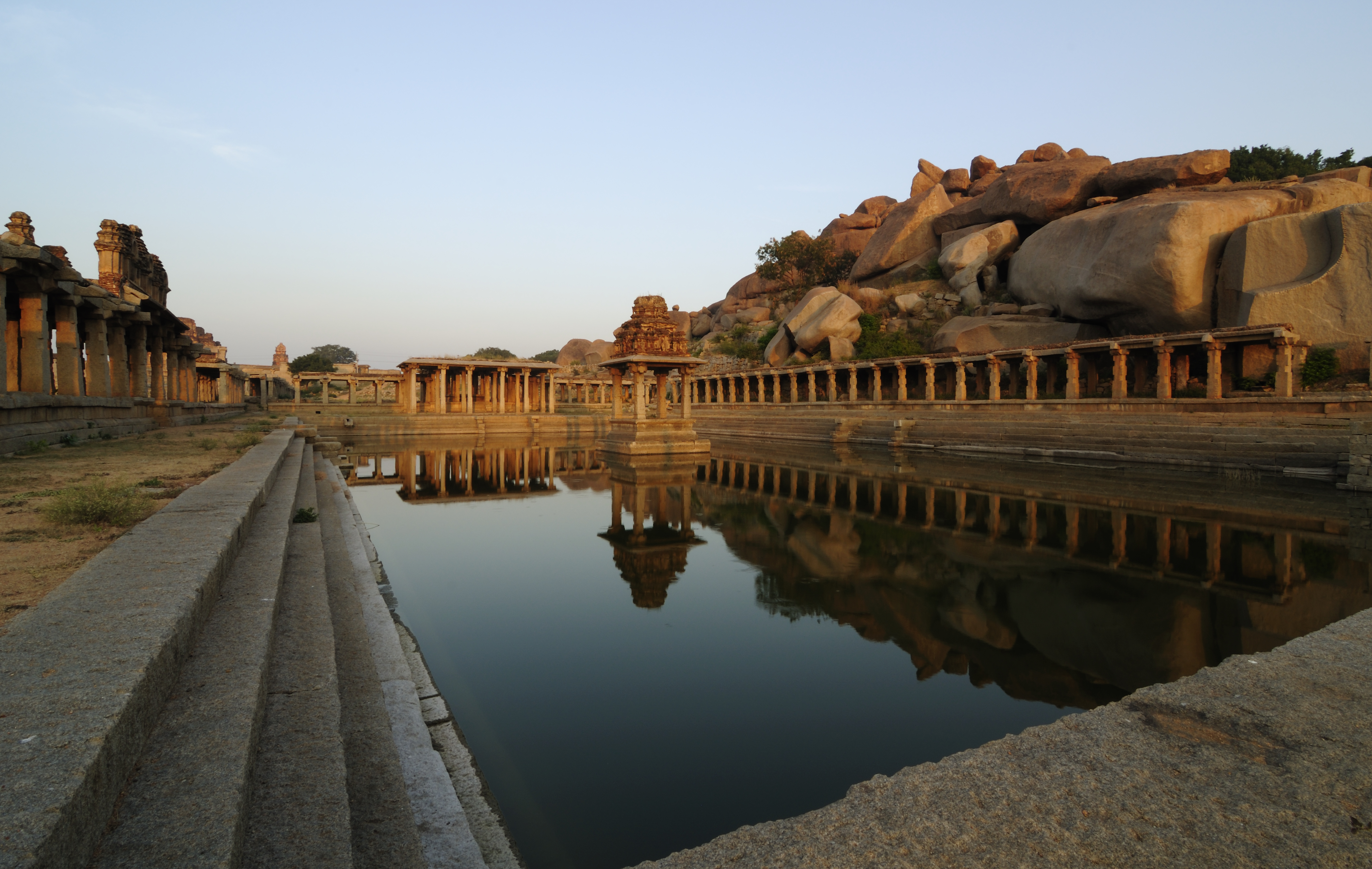Temple tank (Pushkarni) at Shravanabelagola.jpg on:
[Wikipedia]
[Google]
[Amazon]

 Temple tanks are
Temple tanks are
File:Sarovar and the Golden Temple.jpg, Sarovar at the Sikhism, Sikh Harmandir Sahib, the "Golden Temple" at Amritsar, Punjab, India, Punjab
File:Temple tank (kalyani) at the Chennakeshava temple in Belur.jpg, A temple tank at Chennakeshava Temple, Belur, Chennakesava Temple in Belur, Karnataka.
File:Kusuma Sarovar Ghat.jpg, Kusuma Sarovar Ghat in Mathura district, Uttar Pradesh
File:Hoysala Stepped Well (Pushkarni) at Hulikere.jpg, Hoysala stepped temple tank at Hulikere, Karnataka
File:Shravanabelagola2007 - 05.jpg, Tank at Shravanabelagola, Karnataka
File:Mahanandi-pushkarini4.JPG, Large kalyani at Mahanandi, Andhra Pradesh
File:Trikuteshwara well.JPG, Well at Trikuteshwara temple, Gadag, Karnataka
File:Pond Siva temple Kottakkal.jpg, Pond at Shiva temple near Kottakkal, Kerala
File:Temple pond on way to Thiruvalllur.jpg, Temple pond on way to Thiruvalllur, Tamil Nadu
File:Chidambaram Nataraja temple tank.JPG, Tank at Thillai Nataraja Temple, Chidambaram, Thillai Nataraja Temple, Chidambaram, Tamil Nadu
File:Pushkarini at Simhachalam.jpg, Pushkarini at Simhachalam
File:Yaganti.jpg, Yaganti Tank in Andhra Pradesh
File:Kalyani-upper-ahobilam.jpg, Temple tank, Andhra Pradesh
File:Boroli Temple Complex7.jpg, Example of a Shiva temple in a tank (Baroli Temples)
File:Bhaktapur Garudh Kundal 18.jpg, Garuda Kunda in Bhaktapur, Nepal
File:Godawari Temple, Godawari Mela1.jpg, Godawari Kunda, Godawari, Lalitpur, Godawari, Nepal
Sacred Waterbodies of India
'' {{Sikhism Hindu temple architecture Temple tanks in India, Water and Hinduism

well
A well is an excavation or structure created in the ground by digging, driving, or drilling to access liquid resources, usually water. The oldest and most common kind of well is a water well, to access groundwater in underground aquifers. The ...
s or reservoir
A reservoir (; from French ''réservoir'' ) is an enlarged lake behind a dam. Such a dam may be either artificial, built to store fresh water or it may be a natural formation.
Reservoirs can be created in a number of ways, including contro ...
s built as part of the temple complex near Indian temples. They are called pushkarini, kalyani, kunda, sarovara, tirtha, talab, pukhuri, ambalakkuḷam, etc. in different languages and regions of India
India, officially the Republic of India (Hindi: ), is a country in South Asia. It is the seventh-largest country by area, the second-most populous country, and the most populous democracy in the world. Bounded by the Indian Ocean on the so ...
. Some tanks are said to cure various diseases and maladies when bathed in. It is possible that these are cultural remnants of structures such as the Great Bath
The Great Bath is one of the best-known structures among the ruins of the Harappan Civilization excavated at Mohenjo-daro in Sindh, Pakistan.
of Mohenjo-daro
Mohenjo-daro (; sd, موئن جو دڙو'', ''meaning 'Mound of the Dead Men';Dholavira
Dholavira ( gu, ધોળાવીરા) is an archaeological site at Khadirbet in Bhachau Taluka of Kutch District, in the state of Gujarat in western India, which has taken its name from a modern-day village south of it. This village is ...
, which was part of the Indus Valley civilization. Some are stepwells with many steps at the sides.
Tank design
Since ancient times, the design of water storage has been important in India's temple architecture, especially in western India where dry and monsoon seasons alternate. Temple tank design became an art form in itself. An example of the art of tank design is the large, geometrically spectacular Stepped Tank at the Royal Center at the ruins of Vijayanagara, the capital of the Vijayanagara Empire, surrounding the modern town of Hampi. It is lined with green diorite and has no Plumbing fixture#Inlets and drains, drain. It was filled by aqueduct (water supply), aqueduct. The tanks are used for ritual cleansing and during rites of consecration. The water in the tank is deemed to be Sacred waters, sacred water from the Ganges River.Stepwell
In India, a stepwell is a deep masonry well with steps going down to the water level in the well. It is called a ''vav'' in west India and a ''baoli'' in north India. Some were built by kings and were richly ornamented. They often were built by nobility, some being for secular use from which anyone could obtain water.Haridra Nadhi
Haridra Nadhi, tank of the Rajagopalaswamy Temple, Mannargudi, is one of the largest temple tanks inIndia
India, officially the Republic of India (Hindi: ), is a country in South Asia. It is the seventh-largest country by area, the second-most populous country, and the most populous democracy in the world. Bounded by the Indian Ocean on the so ...
. It is located in Mannargudi, Thiruvarur District of Tamil Nadu.
The area of the temple tank is 23 acres (93,000 m2). It is also called Daughter of Kaveri river.
Kalyani
Kalyani, also called ''pushkarni'', are ancient Hindu stepped bathing wells. These wells were typically built near Hindu temples to accommodate bathing and cleansing activities before prayer. They are also used for immersion of Ganesha idols during Ganesha Chaturthi.Sarovar
In Sikhism, temple tanks are called ''sarovar'' (Punjabi: ਸਰੋਵਰ ''sarōvara'').Gallery
See also
* Brahma Sarovar * Ghat * Baray * Tank cascade system (Sri Lanka) * Sacred waters * StepwellNotes
Further reading
* C.P.R. Environmental Education Centre (2002). ''Sacred tanks of South India''. pp. 328.External links
* ENVIS Centre for Conservation of Ecological Heritage and Sacred Sites of India:Sacred Waterbodies of India
'' {{Sikhism Hindu temple architecture Temple tanks in India, Water and Hinduism